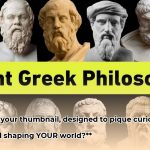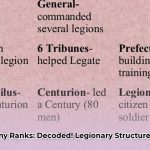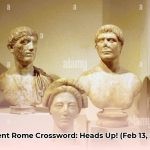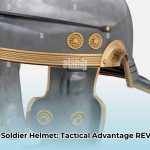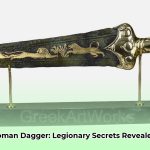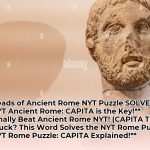Have you ever found yourself puzzling over a crossword clue like “Heads of Ancient Rome,” recognizing its historical weight but struggling to connect it to a concise, precise answer? These clues, often rooted in classical languages and ancient history, can be among the most satisfying to solve once their underlying logic is revealed. When this particular clue appeared in the New York Times crossword on February 13, 2025, many solvers undoubtedly sought clarity. The definitive, direct answer is CAPITA. However, merely knowing the answer is only part of the solution; understanding why “CAPITA” is correct offers a profound insight into Roman language and culture, while also equipping you with powerful strategies to conquer similar linguistic challenges in future puzzles.
Unlocking the Latin Link: “Heads of Ancient Rome” Explained
The key to deciphering “Heads of Ancient Rome” lies in a direct translation from Latin, the language of the Roman Empire. In Latin, the word “caput” (pronounced KAH-poot) means “head.” Its plural form, “capita” (pronounced KAH-pee-tah), directly translates to “heads.” Crossword constructors commonly leverage Latin and Greek roots to craft ingenious and challenging clues that test not only vocabulary but also historical and etymological knowledge. This deep linguistic connection is a foundational element for solving many historically themed puzzles.
Consider the pervasive influence of Latin on the English language. A vast number of English words, especially those found in academic, legal, and scientific contexts, derive directly from Latin. This enduring legacy is why phrases such as “per capita” (“per head”) remain commonplace in modern English, even if their etymological origins aren’t always immediately apparent to the everyday speaker. Understanding and recognizing common Latin roots and their pluralizations can significantly enhance your ability to solve a wide array of crossword clues, from biological terms to historical references. Familiarity with even a few primary Latin nouns and their plural forms, like aqua (water) becoming aquae, terra (earth) becoming terrae, or lumen (light) becoming lumina, can provide crucial breakthroughs in otherwise perplexing puzzles.
A Systematic Approach to Decoding Crossword Clues
To apply this linguistic insight effectively to future crossword puzzles, it’s beneficial to understand the typical mindset of a crossword constructor. Here’s a robust framework to help you tackle similar clues with greater confidence:
- Identify the Source Language: If a clue overtly references ancient civilizations (e.g., “Roman,” “Greek,” “Egyptian,” “Norse”), immediately consider the possibility that the answer or part of it originates from the corresponding ancient language. Latin and Ancient Greek are frequent wellsprings for crossword creators due to their rich, influential vocabularies and their direct impact on English.
- Analyze Plurality and Nuance: Pay close attention to whether the clue uses a singular or plural noun. “Heads” emphatically indicates a plural answer. Crossword constructors frequently exploit this by using the plural form of foreign words, even when the singular might seem more intuitive in an English context. This is a common trick used to guide solvers toward less obvious answers.
- Trace Historical and Cultural Context: What specific aspect of the ancient culture or history might the clue be hinting at? For instance, “Heads” in a Roman context could broadly suggest leaders, individuals counted within a population, or even the depictions of emperors on coinage. “Capita” elegantly encapsulates the broad concept of individual units or figures in ancient Rome, making it a highly versatile and fitting answer that resonates with various historical applications.
The Significance of “Capita” as a Plural in Roman Contexts
The plural form “capita” is perhaps most widely recognized today through the phrase “per capita,” meaning “per head” or “for each person.” The reason for its inherent plurality, even when discussing a concept applied to individuals, has a compelling history deeply rooted in ancient Roman law, particularly concerning estate distribution and inheritance.
Here are the pivotal insights into its usage:
- Roman Inheritance Law: Ancient Roman jurisprudence meticulously distinguished between two primary methods of estate distribution: per stirpes (Latin for “by branch” or “by lineage”) and per capita (Latin for “by heads”). These legal distinctions were crucial for determining how inherited property was divided among heirs.
- Distribution “By Heads”: When an estate was divided per capita, each individual heir received an equal share, irrespective of their familial branch or degree of kinship. This method necessitated a direct count of each “head” or individual entitled to a share. This stood in stark contrast to per stirpes, where shares were first allocated to family lines (e.g., to a deceased child’s descendants as a group) and then further subdivided within those lines. The per capita method emphasized individual entitlement over familial groupings.
- From Legal Term to Common Usage: Over centuries, the term “per capita” transcended its original specific legal application, evolving into a broader statistical and economic descriptor. Today, we routinely use it to denote distributions, averages, or measurements relative to the number of individuals within a given population (e.g., “GDP per capita” or “income per capita”). This historical background clarifies why “capita” functions as an inherently plural term, representing a count of individual units, directly reflecting its origins in the precise enumeration of heirs under Roman law.
“Heads of Ancient Rome”: Confirming the Crossword Clue Solution
While we have thoroughly established CAPITA as the correct solution to “Heads of Ancient Rome,” it is beneficial to note its consistent appearance across prominent crossword puzzles. This six-letter Latin-derived word is a recurring answer in many American crosswords for this specific clue. Its repeated use signifies both its established validity within crossword conventions and its commonality in professional puzzle databases, making it a reliable answer.
The Art of Crossword Clue Construction
Crossword constructors are linguistic artisans who craft clues with remarkable precision and often with a touch of playful misdirection. They typically employ a sophisticated blend of techniques:
- Wordplay: This includes an array of clever linguistic devices such as puns, homophones, anagrams (where letters are rearranged), and double meanings that necessitate creative, lateral thinking from the solver.
- Factual Knowledge: Crosswords are rich tapestries of information, drawing from a vast domain of general knowledge. History, geography, science, literature, mythology, sports, and popular culture are all fair game, requiring a broad intellectual reach.
- Linguistic Roots: As vividly demonstrated by “CAPITA,” a solid understanding of foreign language terms, particularly Latin and Greek roots, is frequently indispensable. These clues bridge the gap between common English and its etymological foundations.
“Heads of Ancient Rome” epitomizes a clue that seamlessly marries precise historical context with a specific linguistic requirement. It’s not merely about possessing a general knowledge of Roman history; it demands familiarity with the Latin word for “heads.”
Elevating Your Crossword Solving Proficiency
Becoming a more proficient crossword solver extends far beyond simple memorization; it involves strategic learning and consistent practice.
Proven Tactics for Enhanced Crossword Success:
- Cultivate Linguistic Awareness: Many frequently encountered crossword answers are directly or indirectly derived from Latin or Greek roots. Dedicate time to familiarizing yourself with commonly used prefixes, suffixes, and fundamental vocabulary from these languages. This foundational knowledge can unlock numerous clues related to history, science, medicine, and everyday vocabulary.
- Master Anagram-Solving Techniques: Crossword puzzles often subtly embed anagrams within their clues. Practice recognizing words or phrases that can be rearranged to form the answer. Training your eye for this type of wordplay can significantly reduce solving times for a substantial portion of certain clue types.
- Utilize Online Tools Thoughtfully: Crossword solver websites and applications can serve as invaluable learning aids. Rather than merely looking up the answer, use them to understand why a particular word fits. Analyze the explanations, explore word origins, and examine alternative clues where the same answer might apply. This transforms a quick lookup into a deeper learning opportunity, substantially improving long-term retention of solutions and strategies.
- Analyze Common Crosswordese and Themes: Over time, you will begin to observe recurring patterns, specific words, and thematic categories in crosswords (often termed “crosswordese”). These frequently include mythological figures, famous literary works, scientific terms, geographical features, and historical personalities. By familiarizing yourself with these common themes and recurring answers, you can anticipate answer types and connections, making even seemingly obscure puzzles less daunting.
- Expand Your General Knowledge Base: A broad and diverse foundation of knowledge across various subjects is incredibly advantageous. Engage with a wide range of materials, from non-fiction books and documentaries to news articles and podcasts. This natural expansion of your vocabulary and factual recall will equip you to tackle clues from virtually any domain.
- Practice Pattern Recognition: Crosswords frequently employ specific structural patterns in their clues and answers (e.g., “___-bodied,” “[word] in a nutshell,” “four-letter word for ‘a long time ago'”). Developing a keen eye for these recurring patterns allows you to make more educated guesses and fill in partial answers, even when a clue initially seems impenetrable.
- Embrace Consistent Effort and Learning: Consistent practice is the single most effective way to improve any skill, and crossword solving is no exception. Do not be discouraged by difficult or incomplete puzzles. Each puzzle solved, no matter how challenging, contributes to building your mental database of clues, answers, and effective solving strategies. The journey of continuous learning is key.
By diligently integrating these tactics into your routine, you will not only confidently solve “Heads of Ancient Rome” but will also profoundly fortify your overall puzzle-solving capabilities, preparing you for the most intricate and rewarding challenges that future crossword puzzles may unveil. After all, the true satisfaction of crosswords often lies in the engaging journey of discovery, one perfectly placed word at a time.
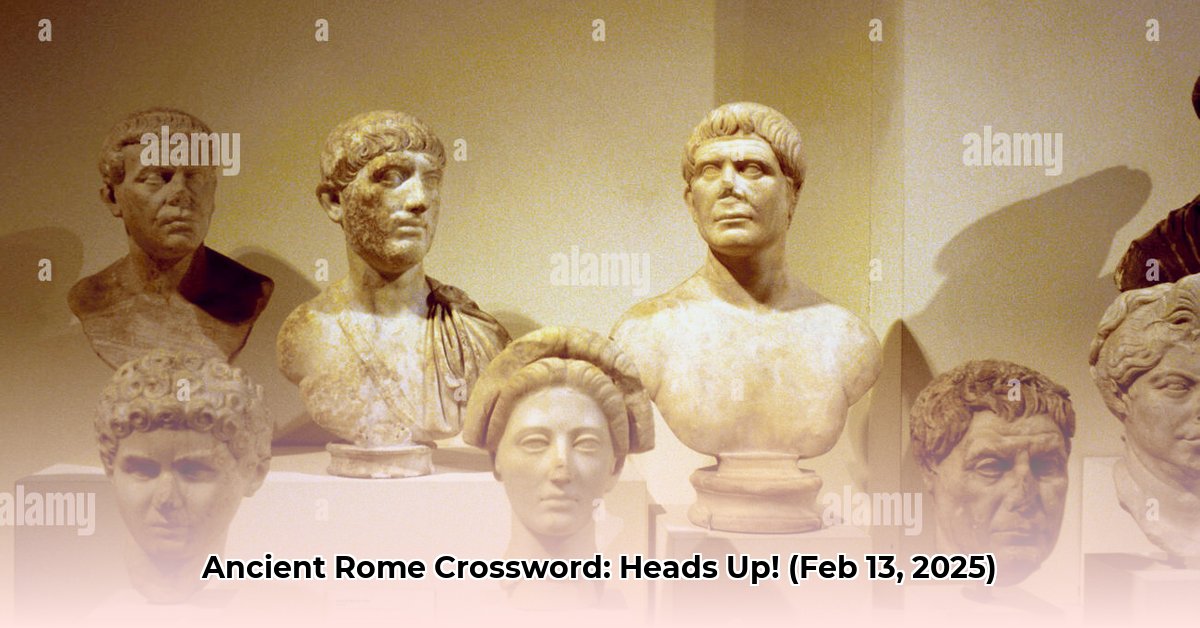


![Unlock [poets of ancient rome] Golden Age: Masterpieces You Need to Know [Reference] Now! poets_of_ancient_rome_edited](https://www.lolaapp.com/wp-content/uploads/2025/08/poets_of_ancient_rome_edited-150x150.jpg)
